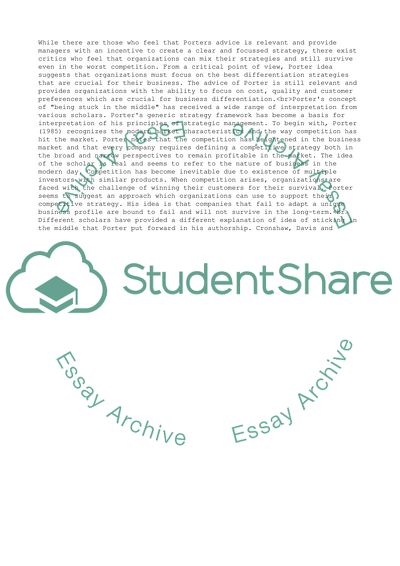Cite this document
(Porters Concept of Being Stuck in the Middle Essay Example | Topics and Well Written Essays - 2000 words, n.d.)
Porters Concept of Being Stuck in the Middle Essay Example | Topics and Well Written Essays - 2000 words. https://studentshare.org/management/1856166-porters-warning-to-organisations-to-not-to-get-stuck-in-the-middle
Porters Concept of Being Stuck in the Middle Essay Example | Topics and Well Written Essays - 2000 words. https://studentshare.org/management/1856166-porters-warning-to-organisations-to-not-to-get-stuck-in-the-middle
(Porters Concept of Being Stuck in the Middle Essay Example | Topics and Well Written Essays - 2000 Words)
Porters Concept of Being Stuck in the Middle Essay Example | Topics and Well Written Essays - 2000 Words. https://studentshare.org/management/1856166-porters-warning-to-organisations-to-not-to-get-stuck-in-the-middle.
Porters Concept of Being Stuck in the Middle Essay Example | Topics and Well Written Essays - 2000 Words. https://studentshare.org/management/1856166-porters-warning-to-organisations-to-not-to-get-stuck-in-the-middle.
“Porters Concept of Being Stuck in the Middle Essay Example | Topics and Well Written Essays - 2000 Words”. https://studentshare.org/management/1856166-porters-warning-to-organisations-to-not-to-get-stuck-in-the-middle.


